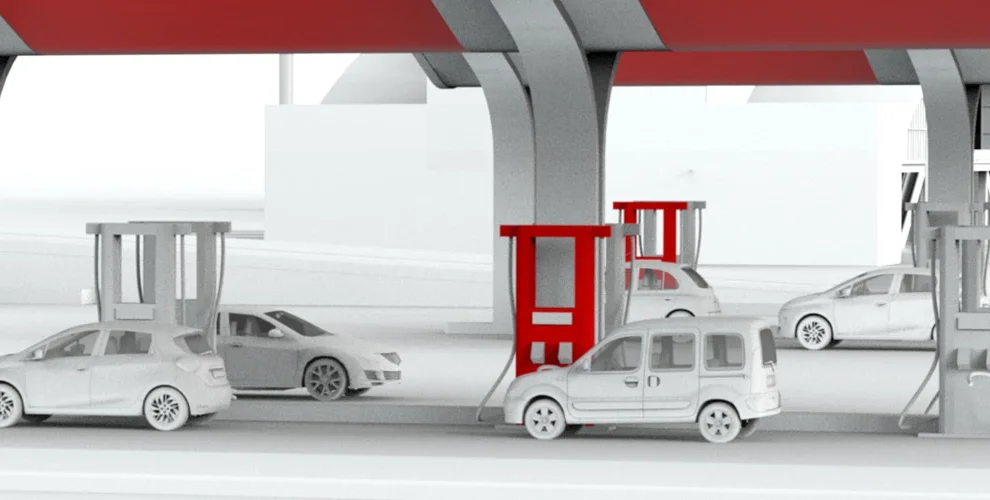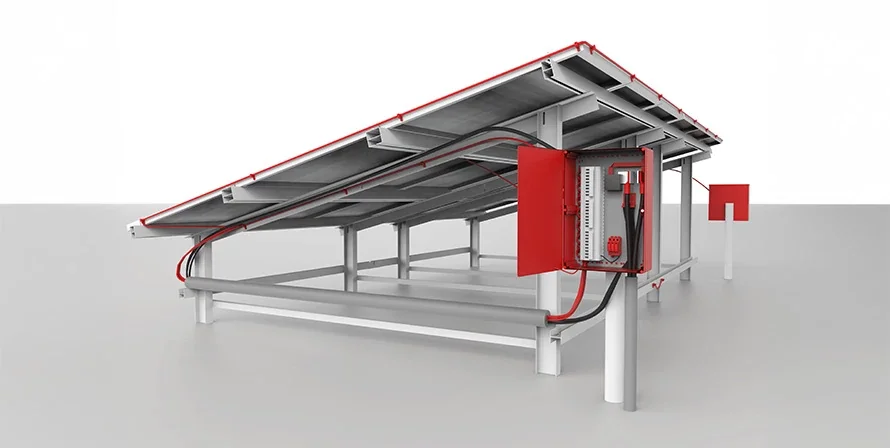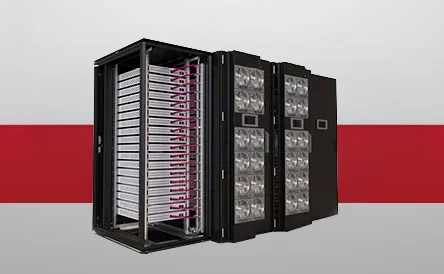Integrating Renewable Resources and EV Infrastructure
As the world becomes more sustainable and electrified, companies and individuals seek ways to reduce their environmental impact. One critical approach is the use of electric vehicles (EVs). EV technology has improved drastically over the last decade, and adoption continues to grow. The International Energy Agency (IEA) estimates that by 2030, 60% of the cars sold globally will be EVs.
However, while tailpipe emissions from combustion vehicles significantly contribute to emissions, global decarbonization requires more than just EVs. Ideally, for these vehicles to be sustainable, the electricity that powers them must come from renewable resources. This involves integrating EV charging stations, renewable energy generation and energy storage technologies.
Driving net-zero goals with microgrids
Integrating multiple energy technologies into microgrid systems can support efficient, sustainable and resilient EV infrastructure. Renewable power generation, especially solar energy, is ideal for EV charging stations. It can be installed on the rooftop of buildings and parking garages, or alongside charging stations, energizing the power banks and batteries that provide charging stations with energy. Additionally, many of the technologies required for solar energy are already used in EV charging installations. This overlap creates synergies that manufacturers and integrators can leverage.
Energy storage is crucial for any EV charging project because stations must have power available 24/7. This is especially important for stations that generate solar power on site. Unlike traditional power sources like solar energy can’t provide power on demand, so it must be stored for later use to bridge the gap between generation and consumption.
Battery energy storage systems separate the timing of energy generation from consumption, enabling energy delivery precisely when consumers need it. As this technology continues to advance, it enhances the use of renewable resources while also improving grid reliability and stabilizing prices for consumers.
Grid reliability and resiliency are also important to consider. Every year, more systems, including vehicles, rely on electricity. NEMA’s Grid Reliability Study forecasts a 9,000% increase in electricity consumption for e-mobility and EV charging by 2050, making it one of the largest drivers of grid demand growth. By 2050, 200 million EVs are expected on U.S. roads. This increased demand for electricity places strain on grid infrastructure. In addition to modernizing the electrical grid (a significant project well underway), this challenge can be addressed by building microgrids that support EV charging, taking more pressure off the grid.
Choosing the ideal applications
Last-mile delivery is inefficient for internal combustion engine vehicles due to frequent stops and starts and travel through urban areas with slow-moving traffic. Additionally, fleet vehicles often need to drive extra miles to refuel at gas stations. In contrast, electrified fleet and last-mile delivery vehicles offer a more efficient alternative and are already on the roads today. Distribution Centers can use their resources to add charging stations and be their own fueling station. This increases productivity by charging while loading or after docking the vehicle at the end of the day. Companies like Amazon and FedEx have already begun integrating EVs into their last-mile delivery services to support their net-zero goals. Fleet vehicles and last-mile delivery represent a significant growth area for EVs, making distribution centers crucial points of development for EV charging in addition to the typical highway charging projects.
Additionally, EV growth will further accelerate as it becomes easier for consumers to install charging stations at home. While this charging infrastructure is critical to increasing the use of EVs and driving decarbonization, it has the potential to strain utility grids if implemented in isolation. The IEA expects EVs to account for 6 to 8% of total electricity demand by 2035, up from 0.5% today. This makes integrating renewable resources and energy storage into fast-charging applications all the more important.
Vehicle-to-Grid (V2G) technology presents transformative opportunities for energy systems and EV owners. By enabling EVs to discharge stored electricity back into the grid, V2G helps balance supply and demand, especially during peak usage periods, reducing the need for costly infrastructure upgrades. V2G enhances integration of renewable energy by storing excess solar or wind power. This technology can serve as backup power sources for homes or buildings during outages.
Multi-tenant housing developments are excellent locations for EV charging infrastructure. With residents and visitors needing to charge their vehicles, installing charging stations at multi-unit dwellings (MUDs) can encourage EV ownership by eliminating obstacles. Most MUD residents do not own their buildings, so they rely on public charging infrastructure and may opt for combustion vehicles or forego owning a vehicle entirely. Integrating renewable energy and EV charging into MUDs can be a valuable selling point for landlords and a key convenience for tenants.
Integrating scalability
Building a complete microgrid for an EV charging installation might seem daunting, but it’s important to remember that these technologies are scalable. Whether for fleet vehicles, last-mile delivery, or residential use, companies and individuals can start at a level that fits their needs and expand as necessary. This can mean installing EV charging connected to grid energy at first, then eventually installing energy storage, and then solar panels. It may also mean building small-scale systems and adding additional charging or energy generation points as demand increases.
Regardless of the option, it’s important to choose infrastructure products that are scalable and easy to install. Aside from the solar panels and charging points, the supporting electrical infrastructure like transformers, combiners, connection solution and battery enclosures should be easy to customize, move, install, and reconfigure. nVent has solutions that are customizable, adaptable and easy-to-install.
Becoming energy-independent and moving toward more sustainable and electrified solutions is important for many individuals and organizations. Fortunately, there are several resources available to do so efficiently and effectively. Undoubtedly, EVs are the future, and those who get ahead of the demand and build resilient and reliable infrastructure will benefit.
nVent's engineering expertise and products give our customers a reliable partner for every step of the process when supporting e-mobility applications. We support EV charging stations and infrastructure to meet power delivery and protection needs. Learn more about our offerings: E-Mobility | nVent





